While it is best known for the many variations on its classic Luminor and Radiomir collections, Panerai has dabbled, pretty impressively in some cases, with highly complicated, highly limited timepieces, as witness the brand’s Carillon Tourbillon Minute Repeater GMT from 2016, for example. However, the one complication that the Florentine brand had never produced, amazingly enough, is a moon-phase. That changes this year, with the introduction of the L’Astronomo, unveiled this week during SIHH 2018. And, in distinct Panerai fashion, a moon-phase isn’t all it offers. Not by a long shot.

The watch, whose full moniker is L’Astonomo – Luminor 1950 Tourbillon Moon Phases Equation of Time GMT – 50 mm — is not only the first Panerai watch equipped with a moon-phase indication but also features the brand’s patented tourbillon regulator, a GMT function, and an inventive new date display that uses polarized crystals. It follows up the first timepiece called L’Astronomo, introduced in 2010, which combined a tourbillon, a calendar, an equation-of-time indication and a sunrise/sunset display and, like this new model, was intended as a tribute to Galileo Galilei.
All the features included in the original L’Astronomo are present in the new one, plus the GMT, moon-phase, and new date system, all driven by the skeletonized movement, Panerai’s P.2005/GLS (the initials stand for Galileo Luna Scheletrato). Like its predecessor, this L’Astronomo is made-to-order only, which means each watch is built to ensure that the moon-phase indication always relates to the sky over the owner’s geographic location.

To start with the newness, i.e., that moon-phase, it is truly different from any we’ve seen previously — located on the back of the movement, incorporating a day-night indicator, and composed of two superimposed disks that rotate in concert with each other. The upper disk, which is read by a small external index fixed onto the movement – displays the day’s 24 hours, showing the sun during daylight hours and a starry night sky for the nighttime. night. At the center of the star field is a round aperture through which the lower disk, with its photo-realistic moon, can be seen, changing its phase ever so slightly by about 6.1° per day, matching the exact duration of one lunar cycle, or an average of 29 days, 12 hours, 44 minutes and 3 seconds. In layman’s terms, all this adds up to a moon-phase display that needs no adjustments for 122 years.
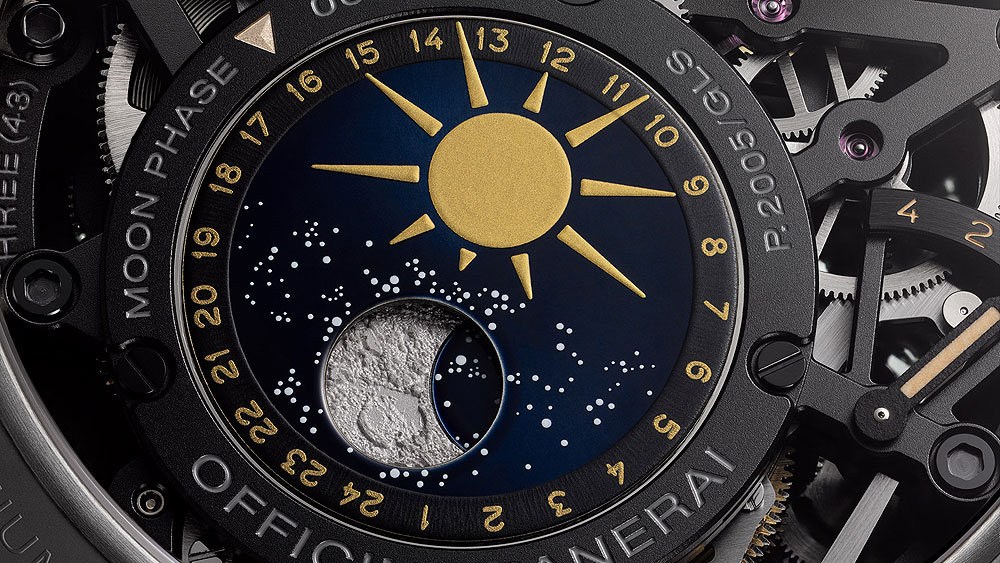
As mentioned above, each watch’s movement is customized for the owner’s home coordinates and even takes into account the difference between the earth’s northern and southern hemispheres. The sunrise and sunset time indications are connected to this home time zone and will continue to show them accurately when the owner travels out of his home time zone, which is indicated by a GMT hand. Panerai’s linear equation-of-time indicator at 6 o’clock displays the difference between actual time (solar time) and conventional time on each day, which can range between plus- and minus-15 minutes, according to the time of year. All of these lunar and astronomical functions, of course, hearken back to the pioneering genius of Galileo-like Panerai, a product of Florence, Italy.
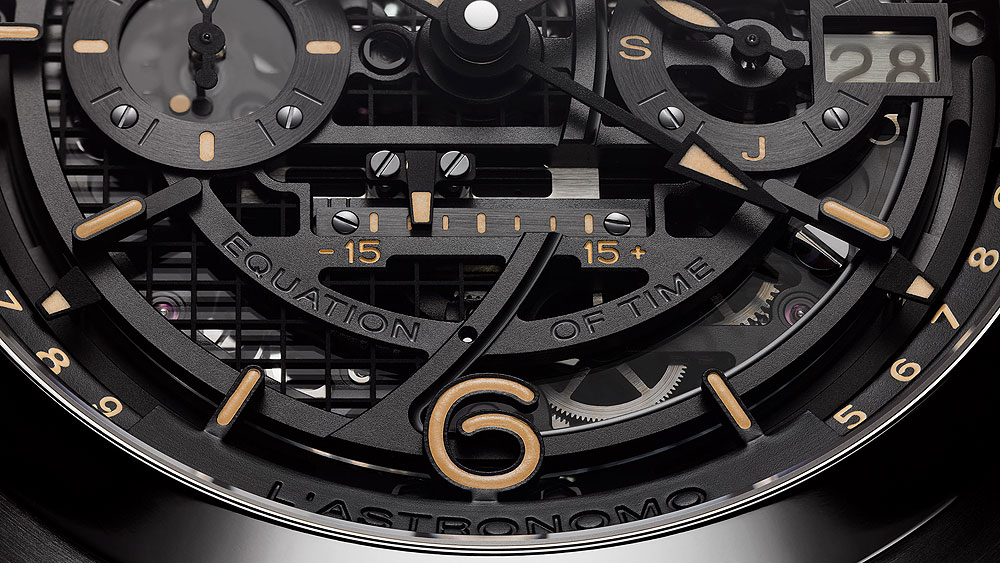
Caliber P.2005/GLS features Panerai’s patented tourbillon regulator system — visible from the front and back of the watch thanks to the skeletonization of the movement — in which the rotation of the tourbillon differs from that of the traditional type. In a classical tourbillon, the balance cage rotates continuously on itself, canceling out any variations caused by gravity and possible shocks. In Panerai’s mechanism, the cage rotates on an axis that is perpendicular, not parallel, to that of the balance. Additionally, the cage in Panerai’s system rotates every 30 seconds, rather than once per minute as in most other tourbillon movements. This rapid rotation is visible in the small seconds counter at 9 o’clock. According to Panerai, the greater speed and particular arrangement of the mechanism enable the regulator to compensate for rate changes more effectively, thus ensuring ideal timekeeping accuracy. As the watch has no traditional dial, all the elements which would be found on the dial appear on the movement or the flange, and the two spring barrels, which hold the watch’s four-day power reserve, are visible through the caseback, which enables the wearer to read the power-reserve indicator mounted on the movement.
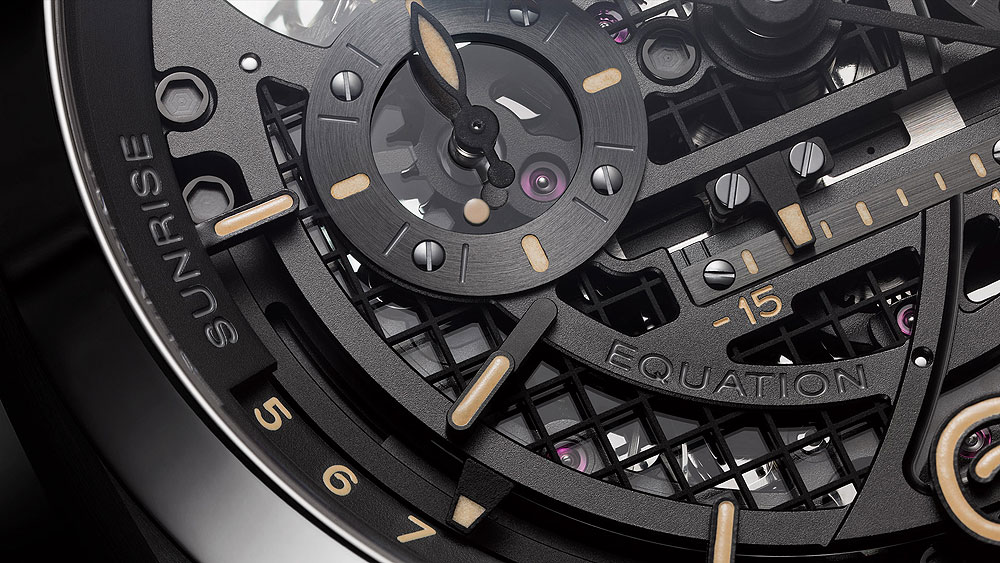
Finally, about that date display: a traditional date disk would have had to obscure or cover too many parts of the skeletonized movement, so the horological brain trust at Panerai’s Laboratorio di Idee at its manufacture in Neuchâtel, Switzerland, came up with a new, patent-pending system in which the date disk is made of borosilicate glass and the numbers of the days have laser-modified optical properties. The resulting visual effect renders the date numerals virtually invisible until they are aligned with the date window, where another polarized crystal, situated above the date disk, brings the number into sharp, readable focus.
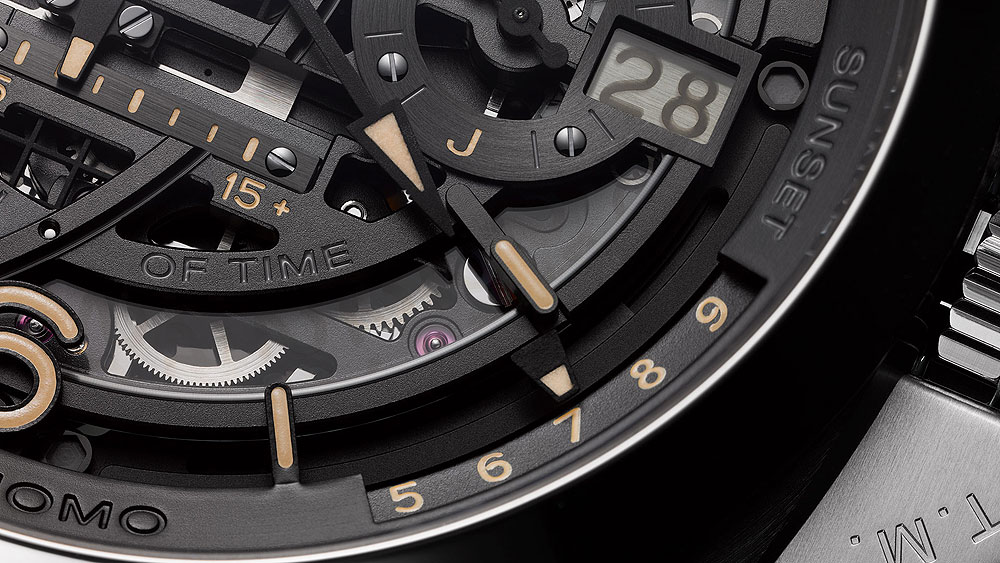
All these Galilean goodies are packed into a 50 mm brushed titanium case with Panerai’s hallmark crown protecting bridge device; each owner can modify the case’s finish, the color of the hands and the Super-LumiNova applied to them and the indices, and the color of the alligator strap. Prices, as one would assume, are upon request.





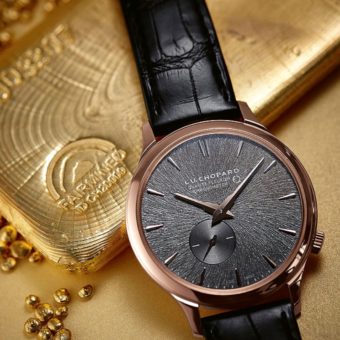

That sun is just inspired!
Maybe if they make a wall clock to fit on wristmore
Stuff can fit in